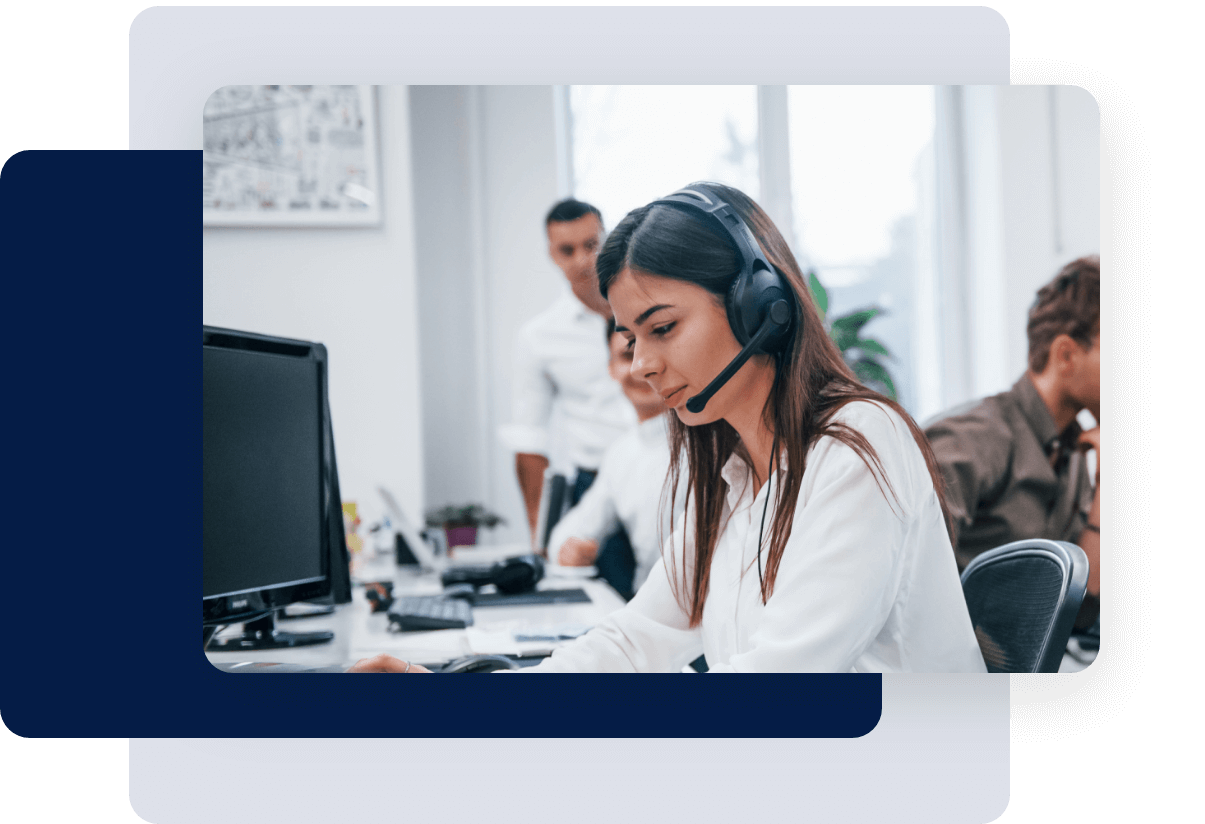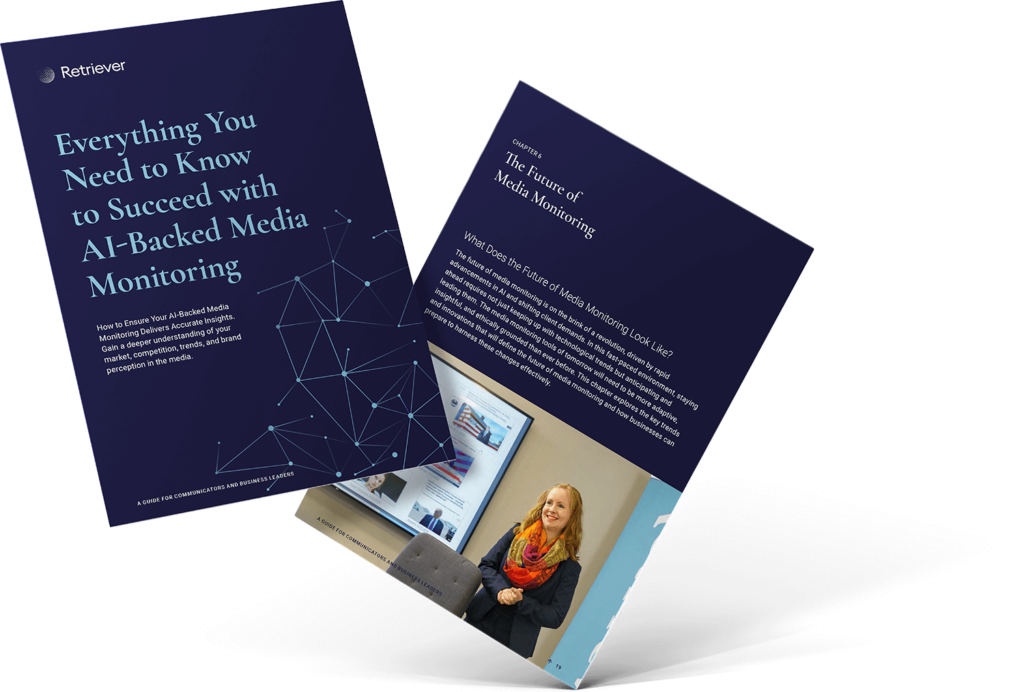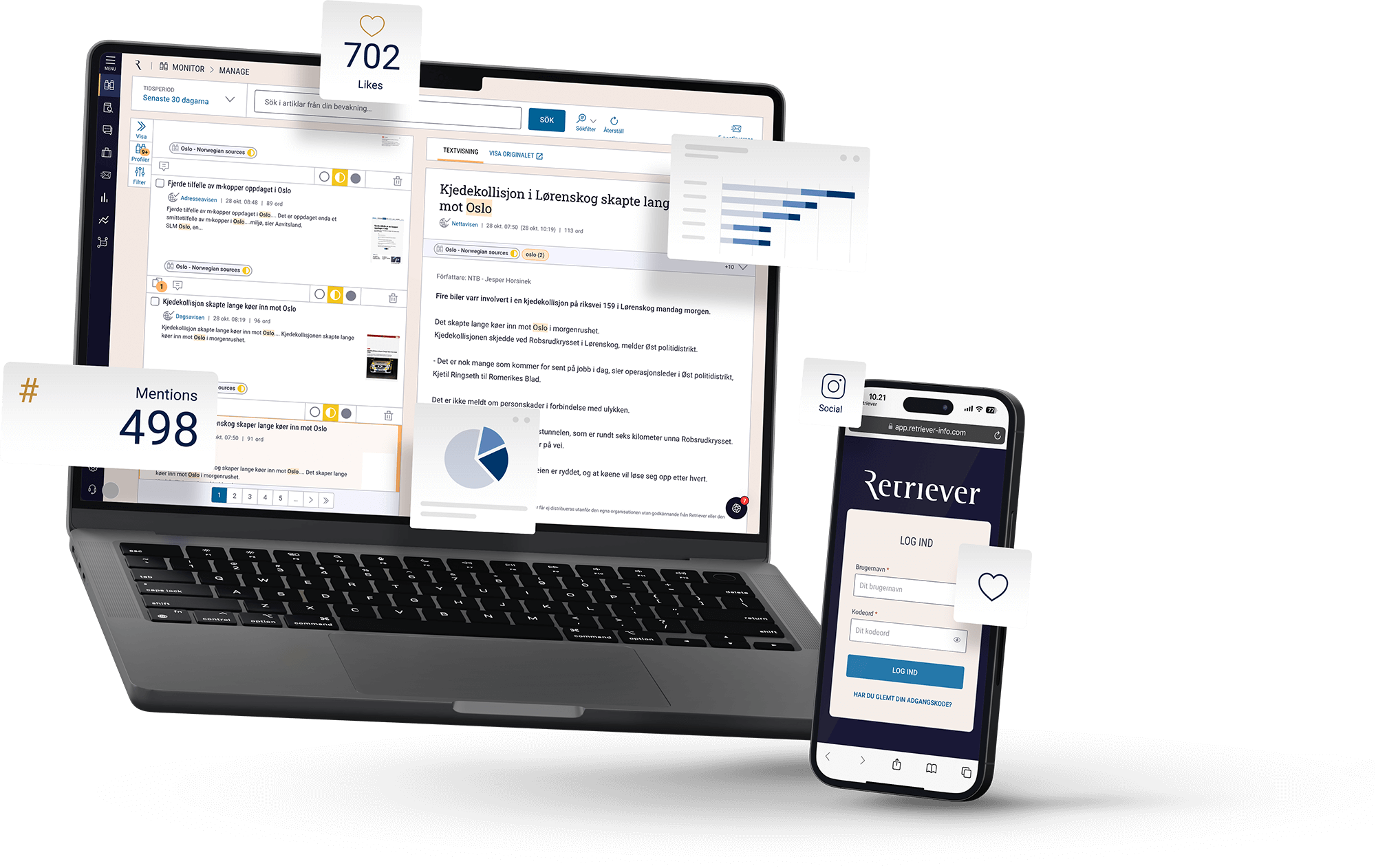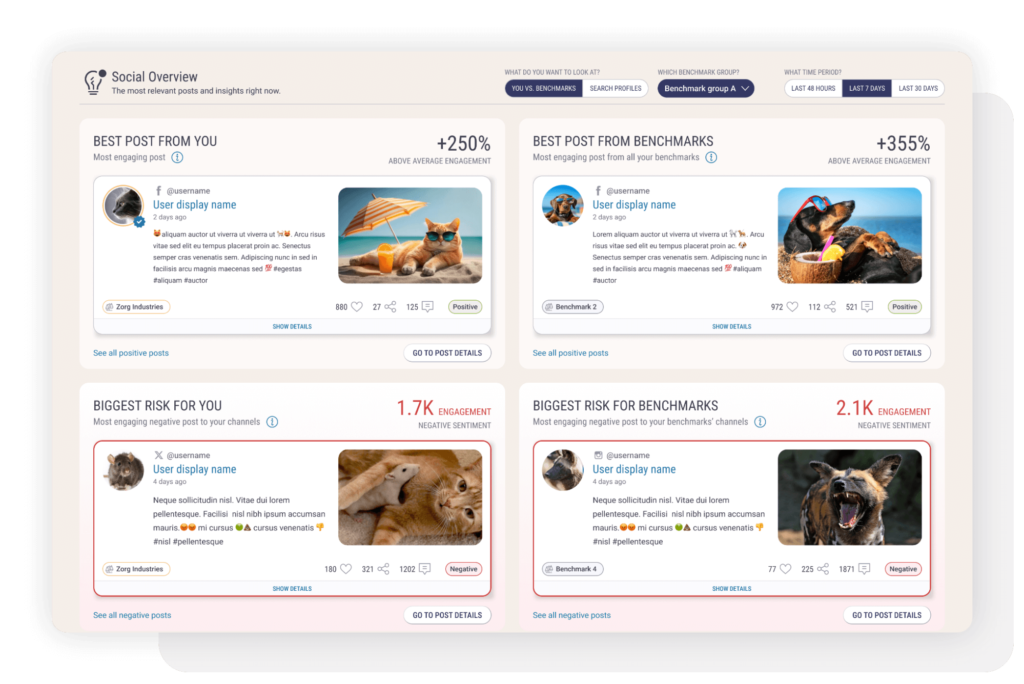AI Powered Solutions for Media Monitoring and Analysis
Our AI-powered media intelligence services are developed with a keen eye for your needs. They provide tailored solutions that deliver valuable insights and give you and your business a better foundation for decision-making.
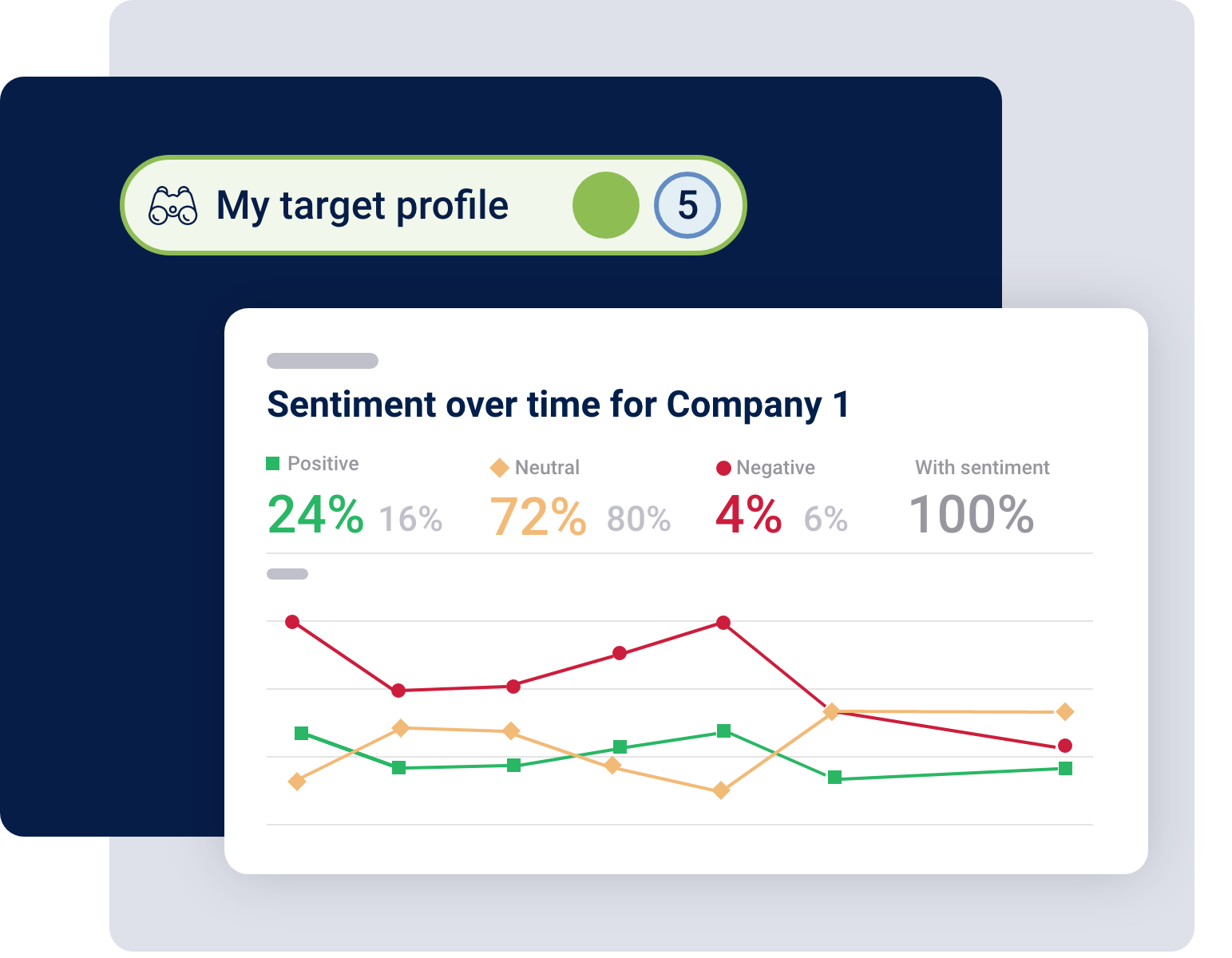
For communications and PR professionals: Optimize your strategy
AI-powered analytics provide deeper insights into your communication and the world around you, customised to your needs.
With our sentiment analysis, you can see the tone (positive, neutral, or negative media coverage) associated with a specific brand, person, or organization.
For businesses: Cut through the noise
Want to learn how to navigate the ethics of media monitoring and find out the six biggest AI trends driving the future? Download our e-book.
Uncover hidden insights from vast masses of information with AI-powered summaries and translations.
Detect anomalies and significant changes within the segments you are monitoring, to better forecast issues and prepare yourself.
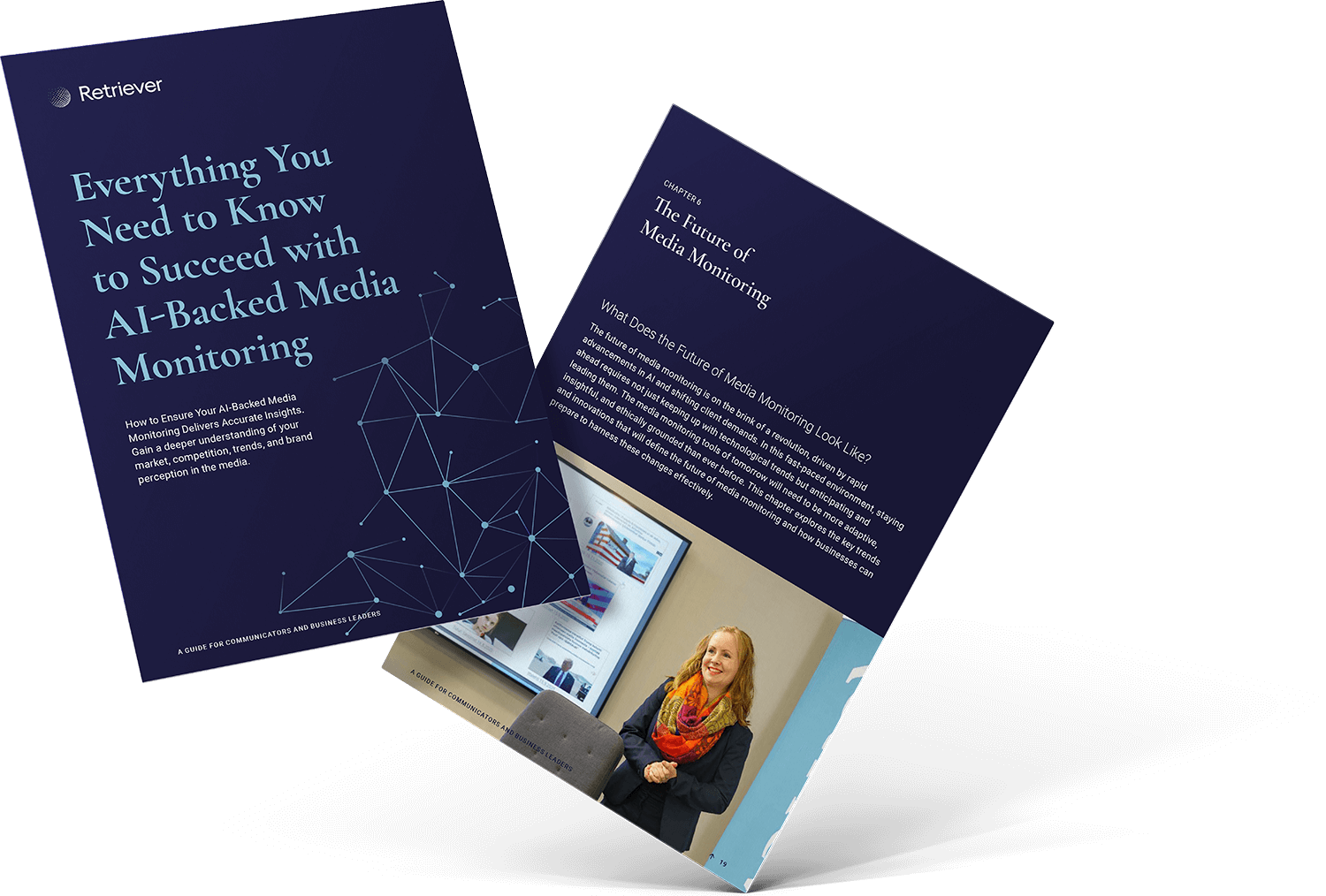
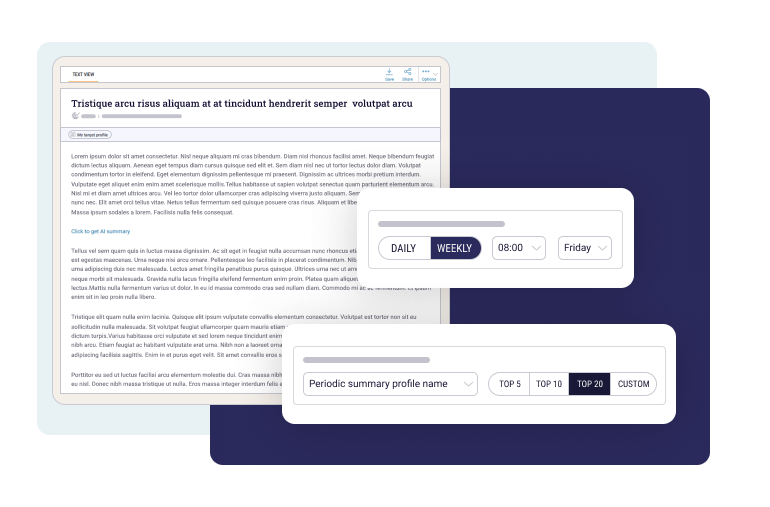
For executives: Gain a competitive advantage
Learn how to transform your business decision-making with the help of AI.
Only the most relevant insights, tailored to your business needs. Reduce manual work and make well-informed decisions.
Competitor tracking and positioning based on market-leading data sets your business up for success.
ARTIFICIAL INTELLIGENCE
How we use AI to the benefit our customers
AI creates tailored article summaries for you
Enjoy tailored summaries based on your chosen criteria—such as person, location, or brand—while minimizing irrelevant results through insightful metrics like media type, visibility, and sentiment. At the same time, seamlessly overcome language barriers with translation of global media coverage, giving you a complete and accurate view of your PR and communication landscape.
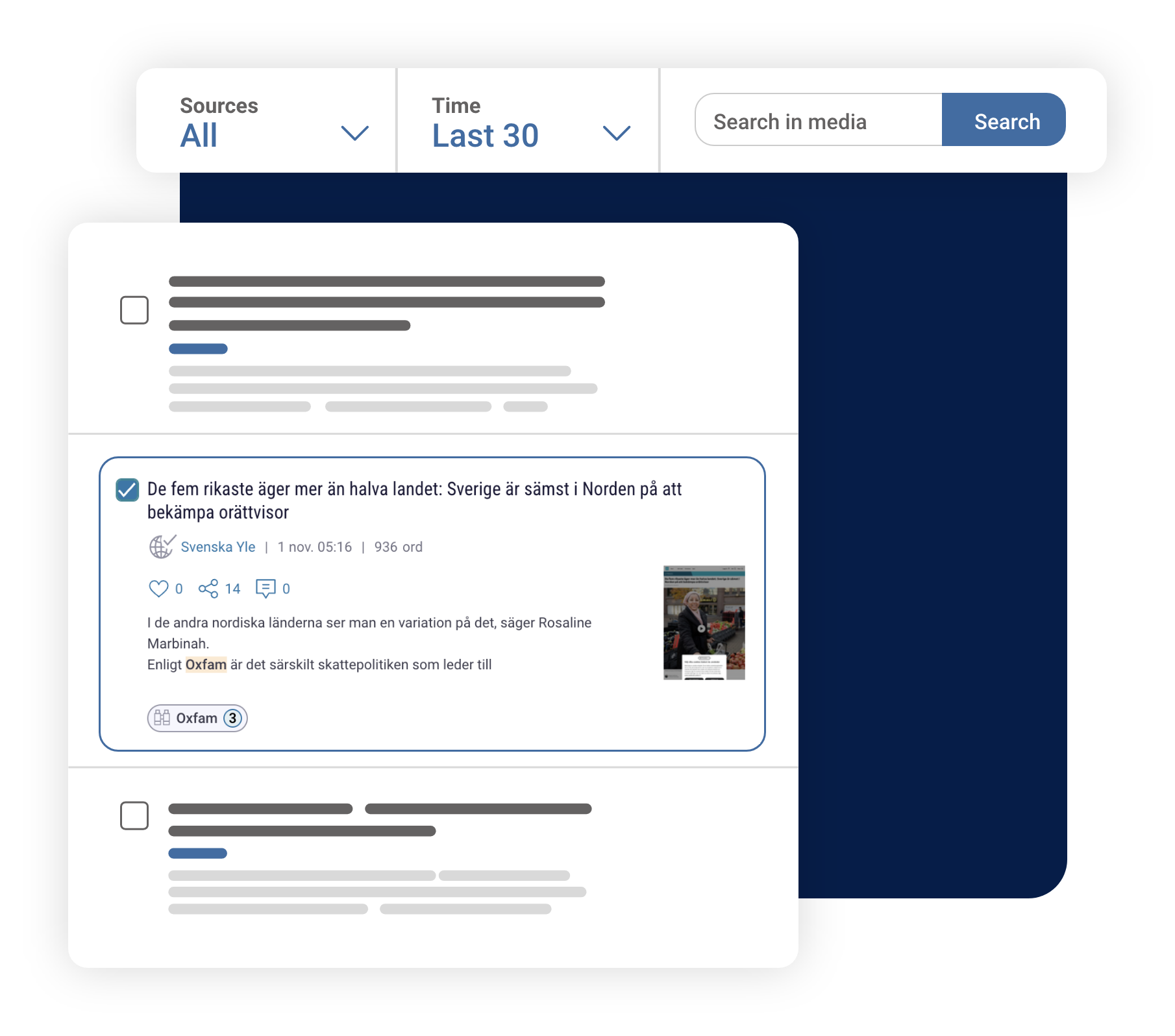
Act with precision and strengthen your reputation with AI-powered sentiment
Gain deeper insight into your brand’s reputation with precise sentiment analysis for specific entities—like your company, a location, or an individual. Instead of scanning the entire article at once, our AI zeroes in on what’s being said about each entity, revealing the true sentiment (positive, neutral, or negative) behind every mention. Shape your PR strategy by proactively addressing issues before they grow.

Stay informed with daily or weekly media insights
Access the most relevant insights from key media events in easy-to-read summaries that are simple to scan anytime and anywhere, so you can stay informed with minimal effort and focus on what matters most to your business—backed by convenient daily or weekly delivery.
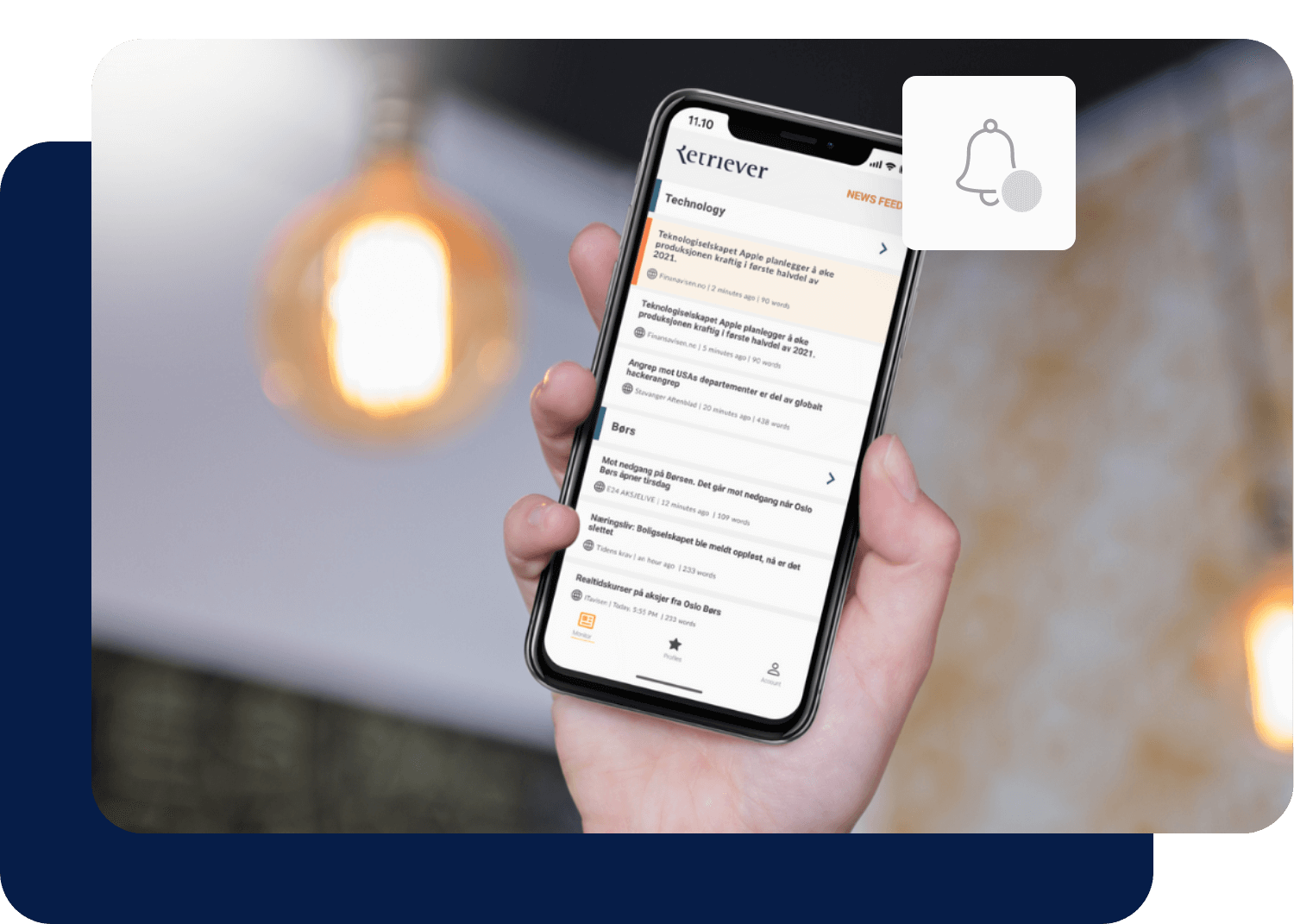
Advanced contextual searches for precise media monitoring
Cut through the noise with AI curating more relevant articles with contextual searches that go beyond traditional Boolean queries. Our team of experts will help you define and refine criteria for relevant versus irrelevant news coverage, continually optimizing the monitoring process based on your feedback—so you can focus on the stories that truly matter.
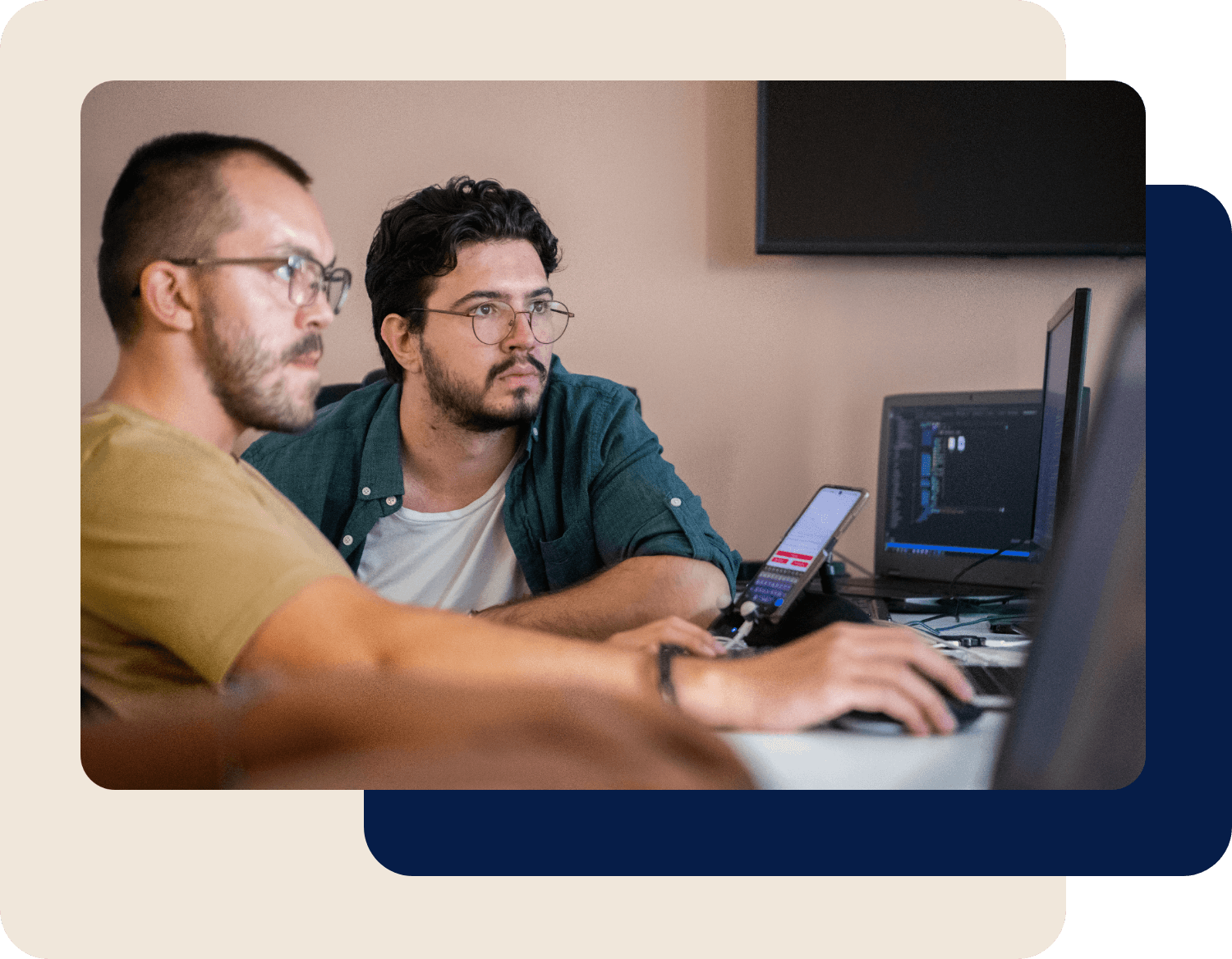
More good reasons to choose Retriever
Retriever has all the tools you need to keep track of your business and the world around you through the media.
Gain a greater competitive advantage
With our comprehensive language support and customised analytics powered by AI, you can make more informed decisions and differentiate yourself from the competition.
Save time and effort
Our AI tools save you time, reduce manual labour and lets you focus on what matters most - getting insights from data and making the right decisions.
Discover new insights
Our semantic similarity and anomaly detection tools often unearth valuable insights that you would otherwise never get. This enables you to respond proactively to changes in the world around you.
Contact us
Contact us to learn more about how our media monitoring solutions can strengthen your business.
